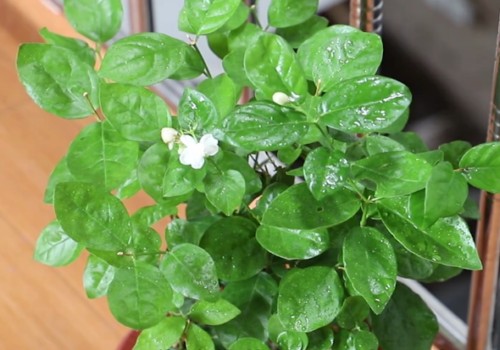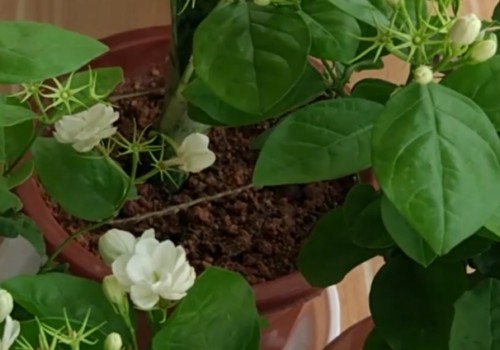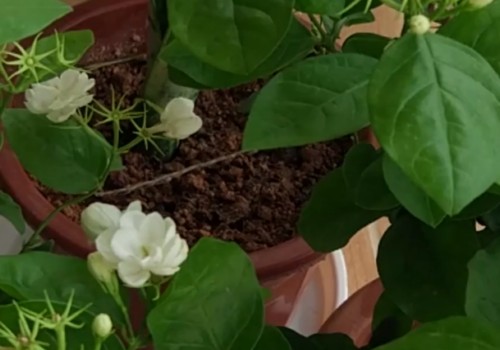What if the leaves of jasmine turn yellow?
Jasmine is a kind of evergreen flower plant that many potted friends like to grow in pots. As for flowering plants, everyone hopes to raise them well and let them blossom as scheduled. However, for jasmine, many novice people will encounter the phenomenon of yellowing of their leaves, which not only affects flowering, but also affects growth.

Jasmine is an evergreen plant. When it comes to yellowing leaves, it shows that there is a problem with its growth. First of all, the intuitive feeling will greatly reduce the ornamental value of potted plants, so what about the yellowing of jasmine leaves? In order to solve the problem of yellow leaves of jasmine, the editor is going to discuss it with you today.
First, the light should be sufficient.
Jasmine is a sunny flower plant, usually placed in the sun must be placed in order to facilitate daylighting, and the light should be sufficient. But at the same time, it is also afraid of the hot sun in the middle of summer, otherwise the tender green leaves of the plant are easy to burn and turn yellow. However, if it is generally placed indoors for maintenance, there is generally no problem of excessive light, and it should be fully exposed to light, otherwise it will also affect the normal growth of the plant due to lack of light, resulting in yellow leaves.
Second, there is no water in the basin.
Jasmine likes to be wet, but at the same time it is not resistant to water and is afraid of waterlogging. Because the root system of jasmine is relatively weak compared with many other flowers and plants. Once there is stagnant water in the basin, it is often easier to cause rotten roots, thus the plant will show the phenomenon of yellow leaves. Therefore, in addition to ensuring that the basin soil is loose and permeable enough, we also need to strictly manage water to avoid overwatering and causing stagnant water in the basin.
In order to improve the drainage effect in the basin, we can first make a drainage layer at the bottom of the basin, such as cinder with a thickness of about 5 cm, which is very good, which can effectively avoid causing stagnant water in the basin, thus providing protection for the normal growth of the plant. put an end to the phenomenon of yellow leaves.
3. Use acid soil
Because jasmine is a kind of acid-loving flower plant, we can't use basin soil with high salinity to raise it. In addition to considering fertility, looseness, air permeability and water permeability, it is also necessary to ensure that the soil is slightly acidic or slightly acidic, so as to ensure that the plant can grow normally.
However, we do not rule out the phenomenon that the salinity of the basin soil becomes higher with our watering and fertilization. in order to avoid this situation, we can use a little ferrous sulfate regularly. Generally, it will be dissolved and diluted 1000 times according to 1Ru, and then irrigated once in 20-30 days. In this way, it can improve the acidity of the basin soil and make the basin soil environment more suitable for the growth of jasmine.
4. Pruning regularly
Jasmine is more resistant to pruning, and its germination ability is relatively strong. Regular pruning can not only promote better plant germination and growth, but also stimulate jasmine to blossom. First of all, cut off the residual flowers in time after flowering, keep 2-3 nodes for each flower branch, and cut off the old, weak and sick branches at the same time. If the branches and leaves are too dense, they should also be thinned properly.
5. Dressing up in time
If the jasmine is short of fertilizer, the branches of the plant will naturally grow very thin, which will inevitably affect its flowering, because the plant does not have enough nutrition and ability to promote flowering, but also more likely to cause yellow leaves. Therefore, the plant should be fertilized in time in the growing season, and nutrients are also needed to restore normal growth and germination after pruning after anthesis, so it is also necessary to apply fertilizer in time to avoid affecting plant flowering or even yellow leaves.
Time: 2019-05-27 Click:
- Prev

What if the jasmine only grows leaves but does not blossom?
Jasmine is a kind of evergreen shrub, which is deeply loved by people because of its white and elegant flowers and fragrant flowers. For people living in a noisy city for a long time, a pot of jasmine is placed on the balcony of the home, which is both fresh and pleasing to the eye. However, if we want to raise potted jasmine well, we still need to master the basic methods.
- Next

What if jasmine blossoms little or no?
Jasmine gives people the impression of green leaves and white flowers, accompanied by a faint fragrance. The flowering period of jasmine is particularly long, and its blooming can often be seen from late spring and early summer to late autumn and early winter. But if we take good care of it, we can even blossom in four seasons. But
Related
- Fuxing push coffee new agricultural production and marketing class: lack of small-scale processing plants
- Jujube rice field leisure farm deep ploughing Yilan for five years to create a space for organic food and play
- Nongyu Farm-A trial of organic papaya for brave women with advanced technology
- Four points for attention in the prevention and control of diseases and insect pests of edible fungi
- How to add nutrient solution to Edible Fungi
- Is there any good way to control edible fungus mites?
- Open Inoculation Technology of Edible Fungi
- Is there any clever way to use fertilizer for edible fungus in winter?
- What agents are used to kill the pathogens of edible fungi in the mushroom shed?
- Rapid drying of Edible Fungi

